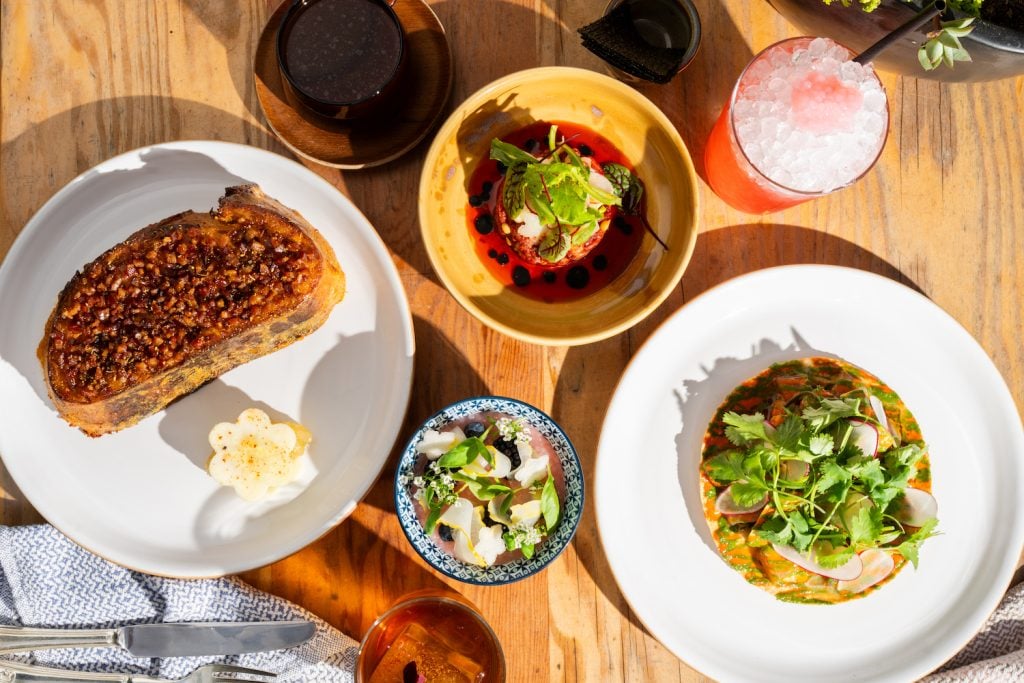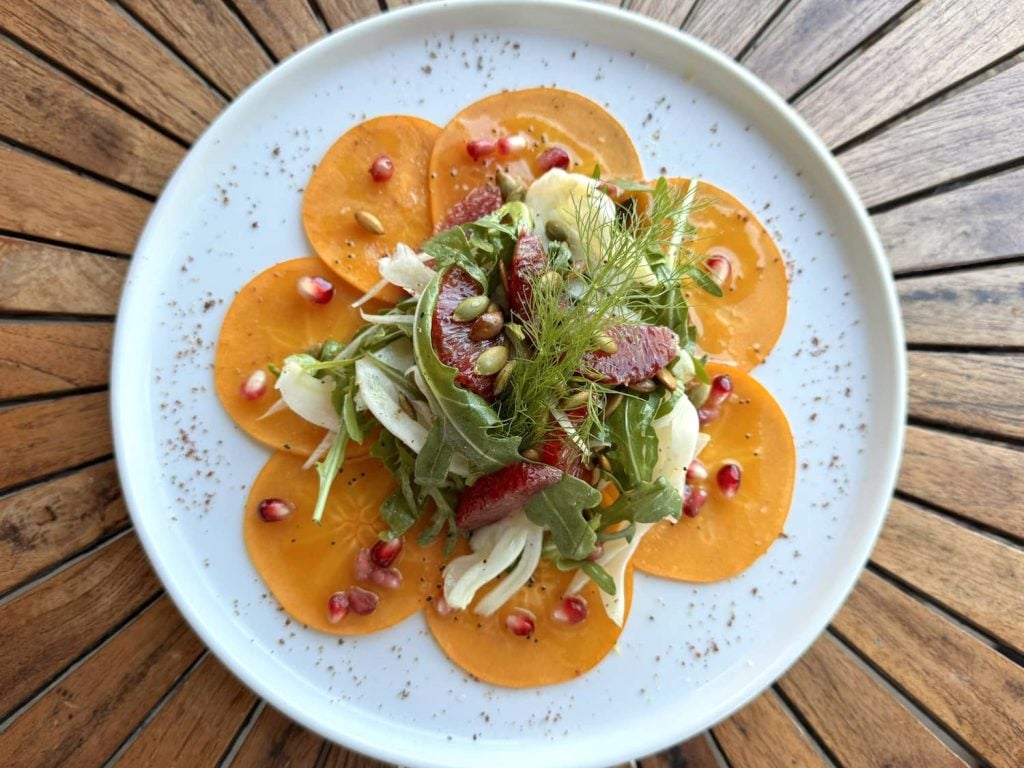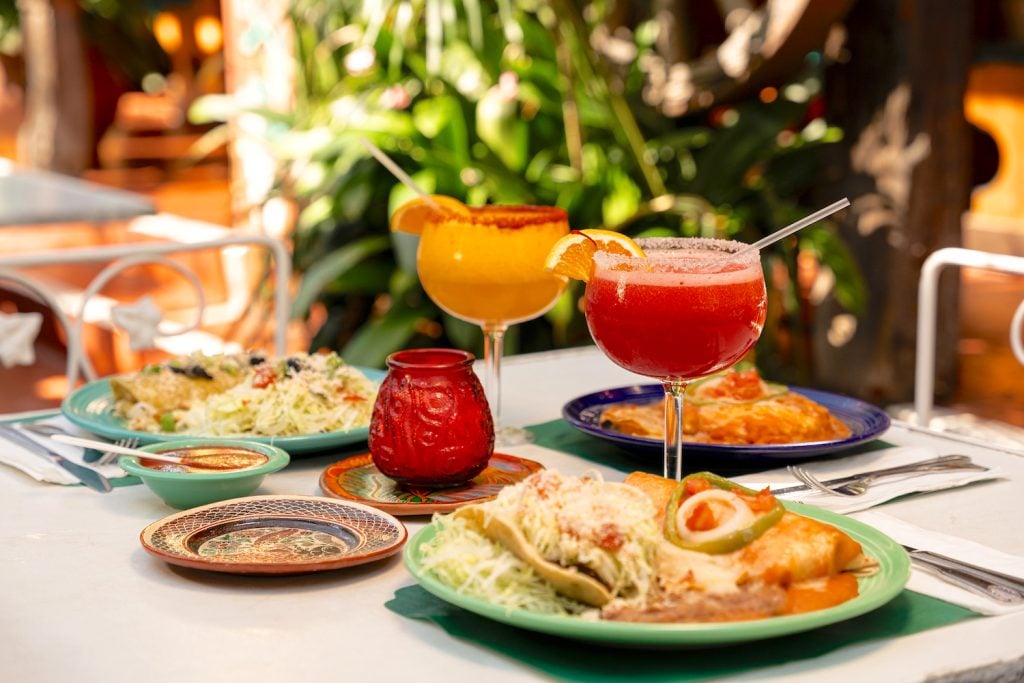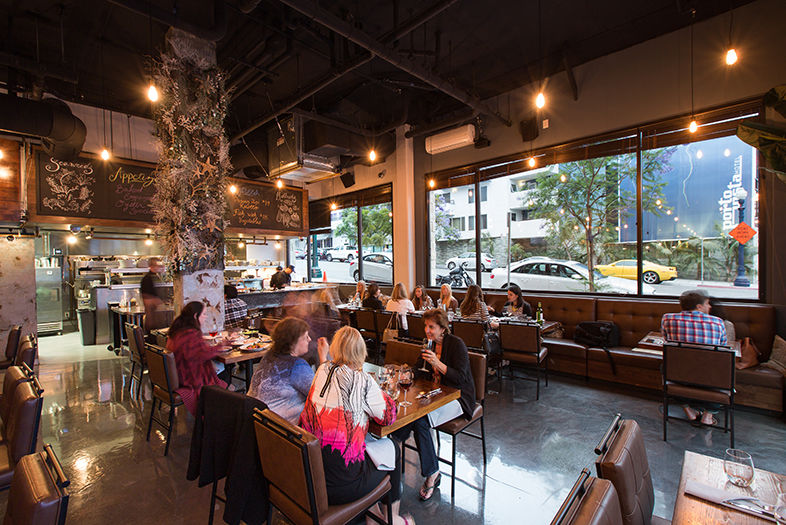Plenty of men like girls who kiss them hard and then set their house on fire. Some people crave consistency in relationships, whether they be with significant others, restaurants, or “brands.” But if you want exhilaration, the price is often sporadic frustration. And that sums up my current relationship with the new South American seafood bistro Sirena Gourmet.
One night, we have delicious cebiches with remarkably fresh, vibrant ingredients. Another night, we slog through some truly unremarkable Peruvian–Japanese sushi. All three nights, we find the service slow, but also incredibly courteous, hospitable, and professional. We’re treated like family, and I guess real family is patient.
Sirena is located on the corner of Columbia and Fir streets in Little Italy—which is most famous for being a block away from the corner of India and Fir streets. Even with its recent boom, Little Italy is largely a one-street food mecca. That street is India. Sometimes the difference between success and that other thing is 100 feet, and Sirena will have to get creative to get Little Italy visitors to look up the hill.

Restaurant Review: Sirena
A SUCKER FOR FLAVOR Sous vide octopus with fava bean purée and black garlic emulsion
A SUCKER FOR FLAVOR Sous vide octopus with fava bean purée and black garlic emulsion
The design of the one-room bistro is bone-basic. It’s a nice, light, airy box stenciled with giant octopus tentacles, with brown leather chairs and bubbly, blue water features that you might find at Sharper Image. No designer would swoon over it, and few save for Dwell snobs would complain too much about it. The wall-sized, street-facing windows maximize the location’s charm.
The restaurant is at its best when executive chef Jaime Chavez, a graduate of one of Chile’s top culinary schools who worked under a Michelin-starred chef in Spain, is cooking at the tiny countertop kitchen that edges the boxy bistro’s dining room.
Sirena bills itself as Latin American cuisine, although it seems to skew Chilean and Peruvian. Which is to skew toward fusion of all sorts, since Peruvian—brought to recent national attention by chef Gastón Acurio—is one of the most multinational cuisines of them all (Incan, Spanish, French, German, Japanese, British—you name it).
Geographically speaking, Chile is the thong of South America, a thin sliver of rocky terrain that reaps the Pacific Ocean’s bounty. Thanks to the chilly Humboldt Current that runs just off the coast, Chile (and Peru) boasts some of the most abundant and diverse seafood in the world. That strip of water is nature’s all-you-can-eat seafood buffet.

Restaurant Review: Sirena
SO COOL YOU’RE HOT: Aguachile ceviche with shrimp, lime, jalapeños, and cucumbers
SO COOL YOU’RE HOT: Aguachile ceviche with shrimp, lime, jalapeños, and cucumbers
A seafood restaurant boasting Latin American roots, then, will live and die by its cebiche—raw fish bathed in citrus, which “cooks” the protein to yield a sort of cold, acidic version of cioppino or bouillabaisse. And all of Chavez’ that we try are in the good-to-excellent range. The excellence comes with his El Chileno ceviche with scallops, octopus, bell pepper, cilantro, leche de tigre, and lemon. The key is the leche de tigre—a silky, almost milky fish sauce base—and the phenomenal, crispy flatbread served with it.
The ingredients of “El Coco” cebiche sound like a boat drink, but it turns out very good with lime, coconut milk, red onion, red jalapeño, grilled pineapple, and cilantro. It’s sweet as you’d imagine, but not diabetically so. Grilling the pineapple brings a char that balances out the fruit’s extreme sugar content. Ours just needed a touch more acid and/or salt and it would’ve been perfect. Chavez also does a solid riff on the Sinaloa, Mexico, ceviche treatment, aguachile (essentially lime, shrimp, water-macerated jalapeños, and cucumbers).
On two nights, we have service issues. Mainly, slowness. It’s a small kitchen. We’re not expecting McSpeed. But even by casual standards, it’s leisurely. What makes up for it all, however, is the young general manager, “Mikey.” At age 22, he has the gracious presence of a 10-year maître d’. The kind of solve-anything, hyperaware presence that makes you want to love Sirena without reservation. When our “Latin Oysters” are served too mild and seemingly without lemon curd as advertised, he immediately has the kitchen give it another try. When we don’t enjoy the octopus sushi roll (tossed in a too-thick coat of aioli that makes it almost like supermarket potato salad, and not cut with enough acid), he explains the chef didn’t oversee the preparation, and knocks it off our bill. (It should be noted that he didn’t know I was a critic).

Restaurant Review: Sirena
chimichurri it up: New York strip steak with potato cake, roasted squash, garlic purée,and chimichurri
chimichurri it up: New York strip steak with potato cake, roasted squash, garlic purée,and chimichurri
Sirena serves a whole section of Nikkei—Latin sushi, which represents the heavy Japanese immigration to Peru. And frankly, we didn’t enjoy it. The signature Sirena roll comes with shrimp, scallop, avo, Amarillo chile, yuzu, and tamari, and and is topped with smoked salmon. With four potentially huge flavor bombs—smoked fish, chile, yuzu (Japanese citrus), and tamari (a more intense soy sauce)—it still manages to be a bit wan. Not bad. Just kind of there.
I’d point you to the yellowtail tiradito, however. The smoked and roasted fish is hit with tamari over a spicy habanero-mango sauce with slices of heirloom tomatoes rounding out the plate. The tamari is excellent on the raw fish, and the spicy-fruit sauce is both sweet and heat.
The one night chef Chavez is on the line, his food is particularly good. He serves a causa trio, a Peruvian take on potato salad—usually blended with oil, lime juice, and aji Amarillo (yellow Peruvian pepper). You’ll often see it layered with chicken or tuna salad, and stacked like a napoleon. But Chavez’ are served as quenelles (football-shaped spoonfuls) in three colors: yellow (with crab, red jalapeño, leche de tigre aioli, and chives), purple (with marinated mushrooms, nasturtiums, and smoked red bell pepper purée), and green (with chicken, huancaína sauce, chives, and olive powder). They’re plated beautifully, and we enjoy both the red and yellow.
Plating beautifully is a thing here. And beauty of plates is a thing that matters in the restaurant world. Sirena’s dishes are riots of colors. Architecturally stacked. Pretty, messy things. A purple carrot is cantilevered against a perfectly tender sous vide octopus tentacle with a fava bean purée and black garlic emulsion. If you’re going to paint octopi on your wall, yours best be good. And Sirena’s is. The entrée of filet of salmon with aji Amarillo chile sauce, roasted sweet potato, sweet potato purée, mushrooms, and greens is also a standout.
The scallop main isn’t quite as successful, a coconut-ginger sauce lacking the bolt of flavor you expect. It’s just okay. And that seems to be my recurring issue with Sirena. There is no hesitation with method. They are making their own sriracha sauces, gelées, cold-smoked ingredients, pickled veggies. They’re dehydrating their plant scraps to make powders and ashes, a staple garnish of coastal Latin cuisine. All dishes can be prepared vegan. But for all the technical extravagance, there’s a hesitation with the spice rack. The kitchen prefers subtlety over intensity when it comes to flavors, and I think to a fault.
Not having a full liquor license yet, Sirena’s bar also plays it safe with craft beer, wine, Champagne, and cava. Of the 18 wines, only five are from Latin America, predictably two Malbecs from Mendoza, Argentina. I’d love to see an exciting list of almost exclusively Latin American wines, including unusual suspects. Chile has fantastic Malbecs and other reds from the Colchagua Valley or Cabs from Maipo Valley. Peru has a more emerging wine region, but some great cold-weather wines and even some Cabs. How about Mexican craft beers, like Insurgente or Cucapá?

Restaurant Review: Sirena
A VEGAN DELIGHT: “Raw” carrot cake with cashew custard, orange purée, berry sauce, and orange sorbet
A VEGAN DELIGHT: “Raw” carrot cake with cashew custard, orange purée, berry sauce, and orange sorbet
For desserts, the vegan “raw” carrot cake is a great option—a dried fruit cake with cashew custard, orange purée, berry sauce, and orange sorbet. For a sin-averse dessert, it’s moist, fresh, and indulgent. But we especially love the coyote, a traditional Mexican pastry that’s almost like a sweet empanada, filled with piloncillo (raw sugar compressed to a brown/molasses flavor), and served with strawberry, mango, and vanilla ice cream.
Rarely do I see so many missteps at a restaurant and still recommend it. But I can with Sirena. First, the people. Second, the flashes of really good, fresh, creative Latin cuisine from chef Chavez that is too uncommon for a town on the border of Mexico. At Sirena, playing with fire is worth the occasional burn.

Restaurant Review: Sirena
















